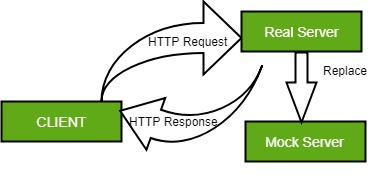MOCK (Introduction) – Software Engineering
Last Updated :
08 Jan, 2024
A mock, in software engineering, is a simulated object or module that acts as a stand-in for a real object or module. Mocks are often used in testing to isolate the behavior of a particular module or component and to verify that it behaves as expected.
Mocks are typically created in code, and they simulate the behavior of real objects or modules by returning pre-determined values, raising exceptions, or triggering other events. By using mocks, developers can test individual modules or components in isolation, without having to rely on the behavior of other parts of the system. This helps to ensure that the tests are more reliable and that they catch issues and bugs more quickly.
There are several benefits to using mocks in software engineering, including:
- Improved test reliability: Mocks help to isolate the behavior of individual modules or components, making the tests more reliable and easier to understand.
- Faster test execution: By using mocks, developers can run tests more quickly, as they do not have to wait for real objects or modules to respond.
- Increased test coverage: Mocks allow developers to test all possible scenarios and edge cases, improving overall test coverage and helping to catch more bugs and issues.
- Reduced test dependencies: Mocks help to reduce the dependencies between tests, making it easier to modify and maintain the test suite over time.
- Improved code quality: By using mocks in testing, developers can improve the quality of their code, as they can catch issues and bugs earlier in the development process.
Mock is an object that clone the behavior of a real object. It is basically used in Unit Testing by testing the isolated unit even when Backend is not available. Why we use MOCK object? The unit testing purpose is to approve each unit of software designed and verify that the generated code is working perfectly, interdependent on external dependencies. Most of the cases, Code under test has some external dependencies like APIs, and It would be better to create a mock object instead of generating test cases on the real object of the dependencies. A web application consists of two components: Frontend and Backend server that are dependent on each other and run simultaneously. The developer of the Frontend is dependent on the backend developer for a server, APIs, and other external services. In the testing or development phase, a major challenge is to handle the various external dependencies. Real Environment exchanges their data through a server where user-end services are handled by a different server and admin services are handled by another server. Developer facing difficulty while developing software. On the other hand tester not able to do efficient unit testing when software is dependent on external dependencies. In order to provide effective testing, mock server is required. Mock server cut out the dependency on a real server and allows tester to do testing independently. Figure gives a virtual Representation of Mock server.

Mock Process in Software Engineering
- Build an Instance or object of Mock object.
- Define States of Mock objects under defined environment.
- Set expectations, status codes, responses, error display in mock object.
- Set Mock object as parameter under domain code.
- Verify Mock objects under unit testing.
Advantages Or Disadvantages :
Advantages of using mocks in software engineering:
- Improved test reliability: Mocks help to isolate the behavior of individual modules or components, making the tests more reliable and easier to understand.
- Faster test execution: By using mocks, developers can run tests more quickly, as they do not have to wait for real objects or modules to respond.
- Increased test coverage: Mocks allow developers to test all possible scenarios and edge cases, improving overall test coverage and helping to catch more bugs and issues.
- Reduced test dependencies: Mocks help to reduce the dependencies between tests, making it easier to modify and maintain the test suite over time.
- Improved code quality: By using mocks in testing, developers can improve the quality of their code, as they can catch issues and bugs earlier in the development process.
Disadvantages of using mocks in software engineering:
- Complexity: Creating and maintaining mocks can be complex and time-consuming, especially if the mocks need to simulate the behavior of multiple real objects or modules.
- Over-reliance on mocks: Developers may become overly reliant on mocks and start using them for all types of testing, instead of using real objects or modules when it is appropriate.
- Reduced testing accuracy: If the mocks are not designed and implemented correctly, they may not accurately represent the behavior of real objects or modules, leading to inaccurate or misleading test results.
- Increased maintenance cost: Mocks require ongoing maintenance and updates as the code changes, adding to the overall cost of using mocks in testing.
- Reduced testing speed: Using mocks can slow down the testing process, as the mocks need to be created and configured before the tests can be run.
Share your thoughts in the comments
Please Login to comment...